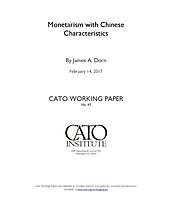This article gives an overview of the basic tenets of monetarism, contrasts monetary policymaking at the Federal Reserve with that employed by the PBC, examines financial repression in China, and offers some lessons learned from the operation of the monetary transmission mechanism under China’s system of monetary targeting and financial repression. While the M1 money multiplier is robust in China, it has collapsed in the United States since the use of unconventional monetary policy. Both China and the United States would benefit from the adoption of an explicit monetary rule, the depoliticization of credit allocation, and market-determined interest rates.
Monetarism with Chinese Characteristics
Monetarism is often misunderstood, overlooked, forgotten, or even derided. Yet its basic logic, resting on the quantity theory of money, is evident and remains important in a world of pure fiat monies. Most major central banks have abandoned monetary targeting in favor of setting interest rates to achieve long-run price stability and full employment. China is an exception. Since 1998, the People’s Bank of China (PBC) has used money growth targets to help guide monetary policy aimed at preventing socially disruptive inflation and maintaining growth of nominal income. However, the PBC is subject to oversight by the State Council; the financial system is dominated by state-owned banks; capital markets are highly regulated; and interest rates and exchange rates are distorted. Thus, China’s monetarism is best described as “monetarism with Chinese characteristics.”

